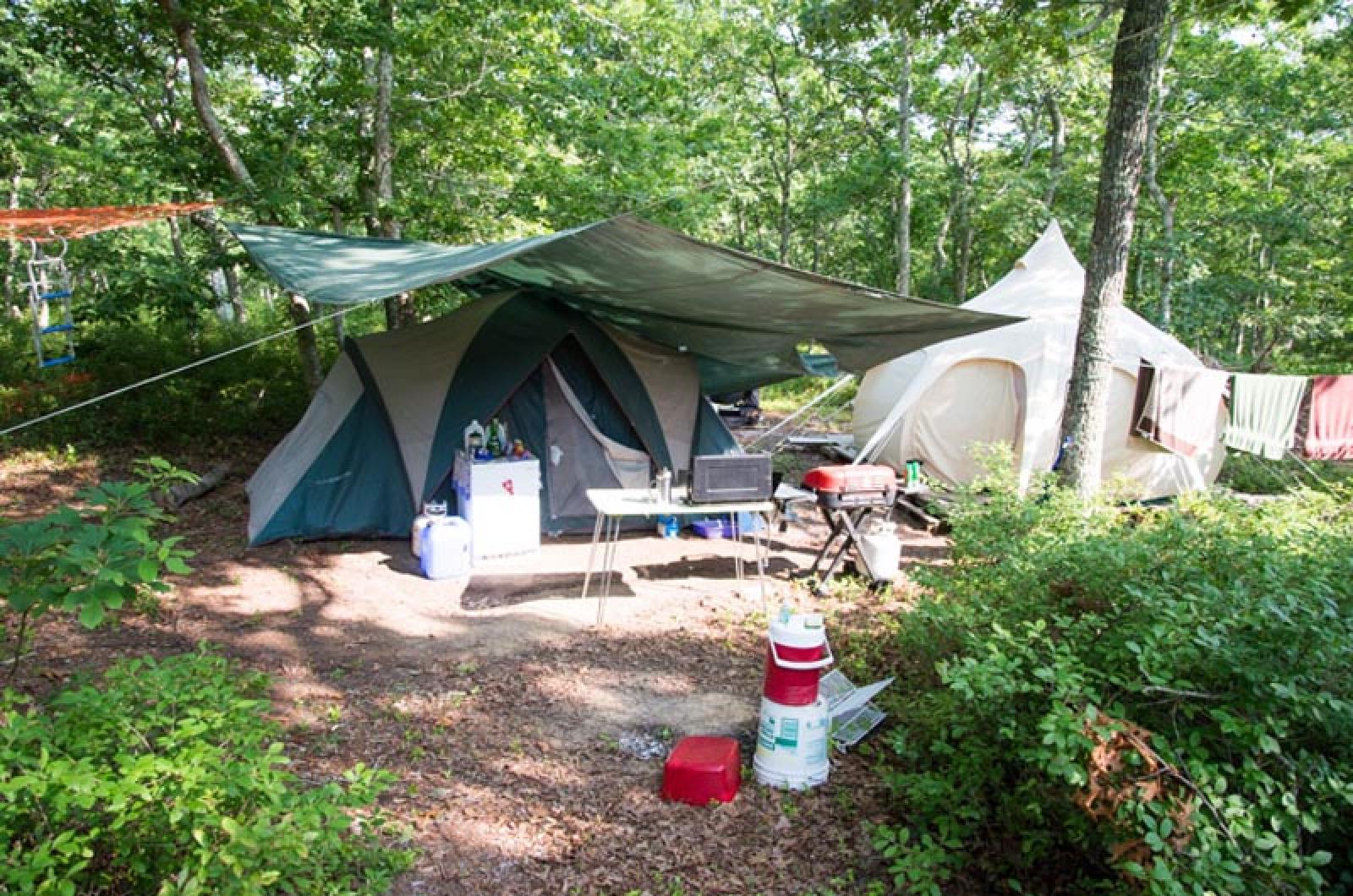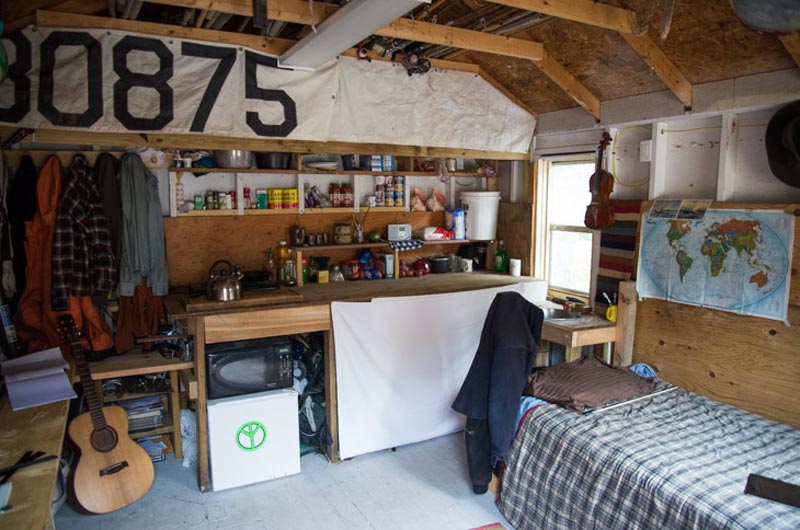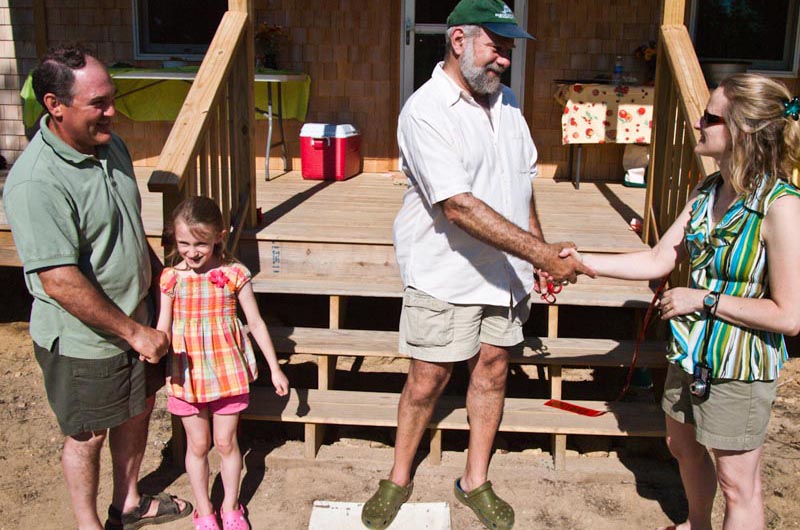Nisa Webster was in a pinch last April. After spending a year and a half living in a stable year-round rental, her home was set to be sold. The Island native, her husband and three kids suddenly needed to find a place to live.
“I was searching everywhere for something,” Ms. Webster said.
The family could pay up to $2,000 a month for a rental, but despite scouring websites, social media and listings in Island newspapers, they couldn’t find anything.
Eventually an old friend helped them secure a place for the summer.
Ms. Webster and her family are not alone. There are nearly 3,500 people who have joined a Facebook page called MV Housing Rentals. The daily posts range from college kids looking for summer housing to year-rounders looking for a place to call home.
The lack of affordable housing, both summer and year-round, is by now a well-entrenched Island problem, but many believe that this year the problem is unusually severe. And paradoxically, business leaders and housing advocates say, it has been made worse by growth in the economy that includes a once-again robust tourist trade and a vacation rental market that is nearly sold out.
“The demand for affordable housing for seasonal workers was through the roof and it was in some regards heartbreaking,” said Nancy Gardella, executive director of the Chamber of Commerce. “And we know that if it is affecting the seasonal workers, we know it must be a crisis level for residents.”
The Dukes County Regional Housing Authority waiting list for year-round rental housing offers a small snapshot of the unmet housing needs on the Island. The list has fluctuated in the past few years, but has stayed between 250 and 350 households, said executive director David Vigneault. He said the biggest change has been what he estimates to be a 10 to 20 per cent drop in income levels among those in need.
Mr. Vigneault identified three sources of demand on the Island’s rental stock: visitors, seasonal workers and year-round residents who are displaced during the summer months in what is known as the Island shuffle.
The chamber of commerce offers a service called the One Stop Job Shop and Housing, which is a match-making site for employers, tenants and landlords. Some visited the chamber office in person repeatedly, looking for new listings, Ms. Gardella said.
“It is that desperate,” she said.
Meanwhile, since the recession, the Island economy has recovered at a steady pace. “People have reported to me that demand is definitely up over 2012,” Ms. Gardella said. She said economic sectors that were flat last year, such as home rentals, construction and retail are reporting growth this summer.
“This year, we are definitely seeing improvement in all of those areas,” Ms. Gardella said.
She said the demand for services on the Vineyard is such that employers have jobs available, which on the one hand is terrific news.
“Unfortunately, we don’t have anyplace for people to live,” she said.
The recovery of the housing sales market on the Island has been both a blessing and a curse, Mr. Vigneault said. Last year, for example, he said he knew of 20 or 30 families with long-term, year-round rentals who were forced to move because their rental properties were being sold.
Meghan Kill of Sandcastle Realty in Edgartown confirmed that it’s been a busy year for the seasonal rental business. Nearly everything she has is rented out for the summer, she said. “People are going to have to wait until next year,” she said.
Though she’s not in the business of renting to the summer workforce, she gets calls throughout the summer from people looking for a place to live.
Sue O’Rourke isn’t in the business of providing housing to summer workers either, but she gets calls at her Martha’s Vineyard Family Campground in Vineyard Haven beginning in spring from people looking for an affordable option for the summer months. This year, she said call volume was up considerably.
The campground isn’t set up for long-term camping. They do rent 25 trailer sites for the summer to mostly repeat customers who book far in advance. But they generally can’t give out their tent sites for an extended period of time, because tourists have already booked them in advance of the season.
“It doesn’t really afford us space for people who are looking for long-term low-income housing,” Ms. O’Rourke said this week.
She does have a couple camping there for the summer, as well as a single woman who works full time, but generally a stay is limited to two weeks. Most of the people who call looking to pitch a tent somewhere on their property are turned away.
“We are not willing to displace families who vacation with us every single summer,” she said.
Pitching a tent there isn’t even very affordable, she said, as camp sites go for $329 dollars per week.
“For single people coming to work, it’s not that affordable and they are like, oh, we thought . . . They made this assumption that they can camp out for cheap,” she said.
Christine Rose has been a landlord on the Island for about 10 years. Although she only rents to year-round tenants, she also assists other property owners who rent to seasonal workers. She said the need this year was especially great for summer housing. “It was startling the number of inquiries of several of the properties that I managed,” she said. “We could have filled them three times over.”
In some cases, people have resorted to living in tents, on the couches of family and friends and in overcrowded conditions.
“There are a lot of situations that are very subpar as far as living conditions,” said Philippe Jordi, executive director of the Island Housing Trust, a nonprofit that builds and manages subsidized housing for low and moderate income Islanders. “In some cases it’s downright illegal, with people living in situations without running water. And towns don’t have the capacity or the willingness to enforce a lot of these restrictions.”
A regional housing needs assessment done on the Vineyard in 2013 recommended an additional 50 units per year to keep up with the demand for affordable housing.
“We’re nowhere near that this year, so we’re falling behind,” said Ewell Hopkins, chairman of the board for Habitat for Humanity of Martha’s Vineyard who worked on the study.
Clyde Barrow, an economics professor at the University of Massachusetts at Dartmouth who did a 2001 economic study on the Cape and Islands, pointed to the difficulty of developing economic opportunities beyond tourism on the Island. The Vineyard’s isolation makes that especially challenging, he said, adding that for most people, their house is their most valuable asset. After Sept. 11, 2001, he said, the U.S. dollar began to decline dramatically against European currencies and the Cape and Islands became a more attractive destination for European tourists. He said a rise in seasonal workers from Ireland and Eastern Europe had a direct influence on the regional demand for housing. With few hotels being built, he said, the only way to meet the demand is through short-term leases.
In the study Mr. Barrow warned: “The region’s labor shortage, a seasonal housing shortage and rising real estate prices are converging to drive up costs for the region’s resort industry.” He said this week he expects those trends to continue.
“The market will eventually bring equilibrium,” he said, “but will restrict tourists by raising prices.”
The high cost of real estate presents many barriers to would-be developers of workforce housing, Mr. Jordi said.
“If you are a developer, if you don’t have your land costs taken care of, it’s a high-risk proposition and there is a lot of uncertainty around development,” he said. “It causes people not to take those risks for very good reason.”
The effects of housing insecurity go beyond the individual level, housing advocates say, to permeate the fabric of the community.
“It’s not a very welcoming community in a sense that we don’t have those housing options for people,” Mr. Jordi said.
Small businesses that can’t afford to house their employees for the summer may suffer more turnover in summer and all year round.
This may force the small business owner to work longer and harder because they have to do more themselves, said Ms. Gardella. “It is a compromise on any service that any small business wants to deliver,” she said.
Mr. Hopkins agreed the struggle extends to employers and business owners.
“I think what’s different about this year is we are seeing how broad the economic impact is,” he said. “People are spending more to provide housing for their employees than they ever thought they would have to, and that’s a challenge.”
Ms. Gardella said the housing shortage also affects visitors.
“Since tourism is our primary industry, it is important that our community is vibrant and diverse and affordable housing is a critical piece of that that is missing,” she said.
The issue has ramifications for the Island economy as a whole, she said.
“That’s what it’s all about, the economy, and how do we keep it robust,” she said. “To do that, the housing component has to be addressed.”
In addition to ongoing efforts of the Island Housing Trust, Dukes County Regional Housing Authority, Habitat for Humanity and town housing trusts to create stable housing for Islanders, a more grassroots awareness of the problem is emerging.
David Richardson, the owner of Tony’s Market in Oak Bluffs, is currently seeking approval from town boards to build a modest apartment building with six to nine units across the street from his store. He said an existing building at the site will be ready for renters in a matter of weeks. Rents will not be subsidized, he said, but they will be reasonable, in line with the market rate in that area. The existing unit has already been rented at $1,400 per month.
“The concept is that this is not a vacation rental, it’s not a second home or something like that,” he said of the overall project, which he hopes will be completed in a few years. “It is designed at what I think the need is, and that is reasonable year-round apartments for young families, older couples, or just whoever that fits.”
He said the project has received support from members of the community who also appreciate the need of year-round rental housing. “It won’t make a huge dent in the need, but half a dozen apartments or so, it will make a difference,” he said.
This fall, Ms. Webster will have to move again. She and her family have to be out of their current rental in September and she’s not sure where they’ll go next. “It’s not a new experience for me, so I think I am able to roll with it and just trust that something will happen even when it doesn’t appear that way,” she said of her current experience.
Still, her husband felt a lot of stress from the experience. Her children were also affected.
“At one point, my son said something like ‘I wish we had a home of our own,’ they definitely started picking up on it too, even though they didn’t know exactly what was going on,” she said.
“My family is here, I grew up here, I think it’s a nice place to raise kids, but it’s not out of the question to leave. Sometimes I think it might be the right thing to do,” she said.








Comments (35)
Comments
Comment policy »